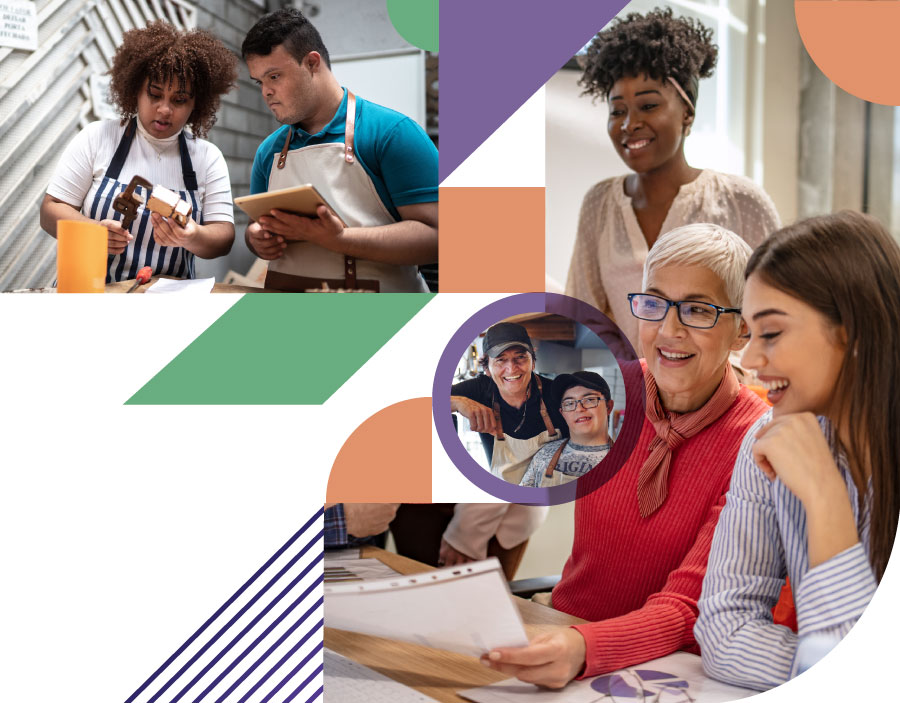Community Engagement and Independent Living
Transition and pre-ETS services should be provided in the community and in the most integrated and least restrictive setting possible. To accomplish this, collaborative partnerships must be developed with community supports, including schools, community rehabilitation providers, local agencies and services providers, VR, and employers. Use these resources to develop and maintain relationships with community systems that support students and youth with disabilities to achieve their educational, living, and employment goals.
Independent Living Skills
Self-care/independent living skills are skills necessary for management of one’s personal selfcare and daily independent living, including the personal management skills needed to interact with others, daily living skills, financial management skills, and the self-management of healthcare/wellness needs.
- Provide instruction, as needed based on assessment data, in (1) financial planning, (2) selfhelp, (3) cooking, (4) housekeeping, (5) home maintenance, (6) using transportation, (7) clothing care, (8) accessing community services, (9) time/ organizational management, (10) self-determination, (11) social roles/ citizenship, (12) community/peer relationships, or (10) critical thinking and problem solving.
- Embed self-care/independent living skills instruction into academic coursework to help students connect academic skills to post-school goals.
- Provide instruction in self-care independent living skills in multiple settings including general education, special education, and community.
- Provide individual, small group, or whole class instruction in independent living and selfcare skills, as appropriate.
- Provide students multiple opportunities to practice independent living skills throughout the school day in real-life situations using real-life materials and equipment.
**Independent living skills may include skills for functioning in an environment that requires interaction with people from different CLD backgrounds.
- Provide transition services (e.g., completing housing application, obtaining Social Security Disability) for students to accomplish postsecondary independent living goals.
More about independent living skills as a predictor of post-school success:
Independent Living: Self-Care Skills Correlated with Improved Education, Employment, and Independent Living Outcomes (PDF)

What's New
The Role of Centers for Independent Living (CIL)
March 18, 2024A Guide to Developing Collaborative School-Community-Business Partnerships
May 20, 2021Key Resources
- Resource Mapping Toolkit
- Resource Mapping: Pre-ETS (PDF)
- Resource Mapping: WIOA Partnership Mapping (docx)
- Transition Fair Toolkit
- Services Integration Continuum (PDF)
- Interagency Collaboration: the Groundwork
- School, Community, Business Partnership – Roles Diagram (PDF)
- The Role of Centers for Independent Living
Related Topics
Transition Planning
IEP Development, WIOA Requirements, Program Structure, and Student Development. More about Transition Planning.Interagency Collaboration
Best practices for interagency collaboration to increase opportunities for competitive, integrated employment for students and youth with disabilities. More about interagency collaboration.Pre-Employment Transition Services
Training to begin exploring jobs and career interests through additional VR services and in collaboration with state and local education agencies to students with disabilities. Explore options on how to make available to all students with disabilities who need those services. More about Pre-Employment Transition Services.Graduation
Strategies to reduce the dropout rate and increase graduation rate of all students with disabilities. More about graduation.Guardianship and Alternatives
Guardianship can offer protection and help for people who can't decide for themselves, but it also means loss of significant freedoms and independence. That’s why it is critical that all transition stakeholders understand guardianship and alternatives to it. More about Guardianship and Alternatives.
